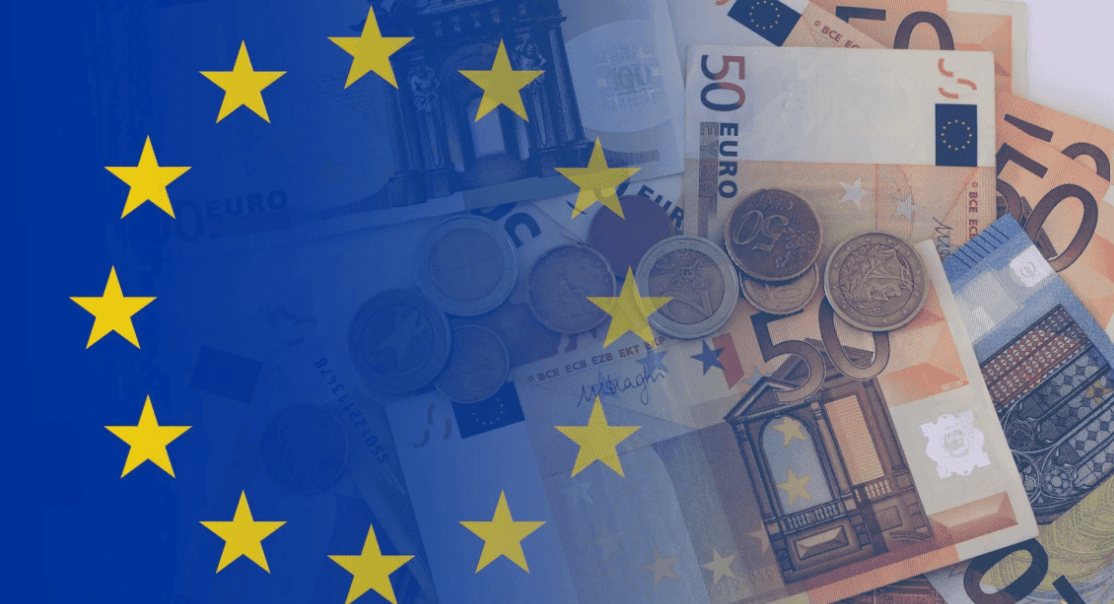Many observers have linked the sharp rise in prices in the US and Europe since 2021 to supply chain disruptions and increasing energy costs. This column argues instead that it was predominantly driven by unexpectedly strong demand forces, not only in the US but also in the euro area. These forces resulted from a combination of surprisingly robust pent-up demand following the pandemic restrictions, exceptionally expansionary fiscal policies, and an unusually accommodative monetary stance by the Federal Reserve and the ECB. This monetary accommodation has mitigated the recessionary effects of adverse supply shocks and supported the recovery, though it has come at the cost of higher inflation.
Both the US and the euro area have recently experienced an episode of significantly high inflation, the first of its kind since the 1970s. Many observers have linked the sharp rise in prices since 2021 to supply chain disruptions and increasing energy costs (e.g. Lane 2022, Bernanke and Blanchard 2023, 2024, Tenreyro 2023, Ascari et al. 2024, Dao et al. 2024, De Santis and Tornese 2024, Forbes et al. 2024). Instead, in our recent paper (Giannone and Primiceri 2024) we argue that the inflation surge in both economies was primarily driven by unexpectedly strong demand forces, including the accommodative policies of the Federal Reserve and the ECB. In this column, we examine the similarities in inflation behaviour in the US and the euro area, explore the causes of the inflation spike, and discuss the trade-offs faced by the Federal Reserve and the ECB.
Was the behaviour of inflation similar in the US and euro area?
To answer this question, we examine some key macroeconomic indicators since the onset of the pandemic. It is well known that the covid recession was more severe in the euro area than in the US, and the recovery slower. However, the behaviour of inflation and many of its components was remarkably similar in the two regions. Figure 1 illustrates this point, by plotting the evolution of headline, energy, goods, and services inflation in the US and the euro area. All these measures peak with an approximate six-month delay in the euro area, but they are otherwise nearly identical in the two regions.
Figure 1 Inflation in the US and the euro area, based on several price indexes


Sources: Data from Eurostat, the European Central Bank, and the Bureau of Labor Statistics; accessed via Haver Analytics; computations by authors.
What caused the inflation surge?
Such similar inflation experiences across the Atlantic is unlikely to be a mere coincidence. In fact, we find that inflation has been largely driven by unexpectedly strong demand forces in both economies. The simplest way to establish this result is by estimating a structural vector autoregression – a multivariate statistical model of the joint evolution of GDP and prices. The model separates demand from supply shocks using the standard assumption that demand shocks generate positive co-movement between real activity and prices, while the co-movement induced by supply shocks is negative.
Figure 2 presents the estimation results, breaking down the evolution of output and inflation since 2020Q1 into demand- and supply-driven components, for both the US and the euro area. The dashed lines in the figure correspond to the pre-covid forecasts, and the distances between the solid and dashed lines are the forecast errors – i.e. the extent to which the data have turned out to be different from the pre-pandemic predictions. The yellow (green) bars represent the shares of these forecast errors that have been driven by unexpected changes in demand (supply). Note that adverse supply shocks have contributed very negatively to the evolution of economic activity in both economies, and especially in the euro area. But the contribution of these supply shocks to inflation has been somewhat limited. Instead, inflation seems to have been driven for the most part by unexpectedly strong demand forces. This is true not only in the US, but also in the euro area. As we show in our paper, this result is extremely robust, holding for many alternative specifications of the model with (i) other measures of real activity and prices; (ii) the addition of aggregate energy prices, and of household energy and transportation energy prices separately; (iii) the addition of interest rates; and (iv) the use of data on consumption and prices in both the good and service sector.
Figure 2 Historical decomposition of GDP and inflation dynamics


Sources: Data from Eurostat, the European Central Bank, the Bureau of Labor Statistics, and the Bureau of Economic Analysis; accessed via Haver Analytics; computations by authors.
What explains the finding that inflation is predominantly demand-driven?
The result that inflation was predominantly demand-driven deserves further discussion, because it runs contrary to the popular belief that supply chain disruptions were the primary cause of inflation. To understand why this popular narrative is problematic, consider Figure 3. This figure depicts the aggregate demand (AD) and supply (AS) curves in the US and the euro area, whose slope is inferred from the pre-covid estimates of our statistical model. Notice that the AD curves in both panels are quite flat. It is important to realise that the slope of the AD is not an exogenous object, but it depends on the systematic conduct of monetary policy. The more a central bank responds to deviations of inflation from the target, the flatter the corresponding AD. Therefore, a fairly flat AD is exactly what we should expect for economies with central banks that have established a strong record of keeping inflation low and stable, like the US and the euro area.
But if the AD is flat, left shifts in the supply curve depress output but cannot produce much inflation. For inflation to climb to its 2022 level, the AD curve must either (i) shift upwards (as depicted in figure 3), reflecting unexpectedly strong pent-up demand following the pandemic restrains, or uncommonly expansionary fiscal policies; or (ii) become steeper, reflecting an unusually high degree of monetary policy accommodation of inflationary pressures, including those generated by adverse supply shocks. Absent the demand expansion represented by (i), (ii), or a combination of the two, inflation would have increased much less, even after an AS contraction.
Figure 3 AD and AS curves in the US and the euro area


Sources: Data from Eurostat, the ECB, the Bureau of Labor Statistics, and the Bureau of Economic Analysis; accessed via Haver Analytics; computations by authors.
What about rising energy prices? Didn’t they play a significant role in driving up inflation?
They likely did, but primarily in an accounting sense. For example, Bernanke and Blanchard (2023, 2024) document a strong reduced-form correlation between headline and energy inflation in several developed economies, including the US and the euro area. However, as Olivier Blanchard stated on X on 18 May, “finding that post-pandemic era inflation was mostly due to […] the relative price of commodities […] does not settle the issue of the role of aggregate demand and monetary policy in generating the inflation”. In fact, our work indicates that the increase in energy prices itself was largely demand-driven in both the US and the euro area. In comparison, the contribution of energy supply shocks to energy inflation was relatively limited, although it did peak in the first quarter of 2022, around the time of the Russian invasion of Ukraine. 1
Our findings also challenge the popular narrative that demand shocks originating in the US might have triggered a global increase in energy prices, which then manifested as supply-side pressures in the euro area, leading to higher prices and reduced economic activity. If this were the case, supply-side shocks in the euro area would have played a much more significant role in driving inflation than what is shown in figure 2.
What would have happened if the ECB had kept inflation closer to 2%?
The conventional view is that central banks should respond vigorously to demand shocks, by essentially neutralising their impact on real activity and inflation. On the contrary, they should mostly ‘look through’ supply shocks, especially if these shocks are temporary, because they generate a trade-off between inflation and output stabilisation. But what would have happened if the ECB had not accommodated the inflationary pressures and had neutralised the demand forces driving inflation to keep it closer to 2%?
To address this question, we use our model (augmented with a measure of interest rates) to compute the evolution of the euro area economy under this counterfactual ECB policy. Figure 4 shows that this policy would have reduced inflation very substantially, as shown by the turquoise line in panel b. However, it would have come at the cost of a significantly deeper recession (panel a). This analysis highlights the difficult trade-offs faced by policymakers in navigating the post-pandemic recovery. In a highly uncertain environment, it turns out that the ECB’s accommodative stance helped the economy recover, albeit at the expense of higher inflation.
Figure 4 Counterfactual history under a ‘leaning against demand’ policy


Sources: Data from Eurostat, the European Central Bank, the Bureau of Labor Statistics, the Bureau of Economic Analysis, and the Board of Governors of the Federal Reserve System; accessed via Haver Analytics; computations by authors.
What should we expect going forward in the euro area?
At the time of writing, headline HICP year-on-year inflation in the euro area is approaching the ECB’s medium-run target, while euro area GDP remains below its pre-covid trend by roughly 4%. What is the likely outlook going forward? To answer this question, we project our model forward and compare its predictions with those of professional forecasters.
The results of this forecasting exercise are reported in Figure 5. Our model predicts a smooth path of inflation in panel b, approaching its pre-covid mean just below 2%. However, GDP is unlikely to return to its pre-covid trend in the next two years, as shown in panel a. The forecasted paths of both inflation and GDP justify the expected gradual decline in interest rates depicted in panel c.
Figure 5 Model based and professional forecasters


Sources: Data from Eurostat and the ECB; accessed via Haver Analytics; computations by authors.
Notes: Professional forecasters provide predictions for the main refinancing operations (MRO) rate. In panel c, we use the MRO predicted by SPF for 2025 and 2026 as their implied forecast of the one-year Euribor for 2025Q1 and 202:Q1.
All of the panels in Figure 5 also display the April 2024 consensus from the Survey of Professional Forecasters (SPF), which closely matches the forecasts of our model. The alignment between the SPF and our model’s predictions – based on pre-covid data and thus reflecting pre-covid monetary policy conduct and transmission – indicates that the ECB’s monetary policy has returned to its pre-covid standards, according to professional forecasters. In essence, the ECB is not suffering from any major scarring or credibility loss from the sustained accommodation during the pandemic. The market seems to have viewed these measures as temporary, rather than a permanent alteration of the monetary policy framework.
Source : VOXeu



































































